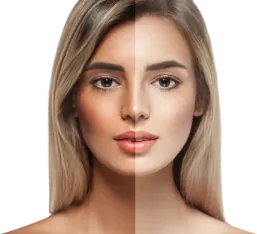
Understanding Tanning Beds
Understanding Tanning Beds

Debunking Misconceptions and Emphasizing Safe Practices
Introduction: Tanning beds have long been a subject of debate within the realm of skincare. While excessive exposure to UV radiation can indeed be harmful, when used responsibly and in moderation, tanning beds can offer certain benefits. This article aims to provide a balanced perspective by debunking common misconceptions surrounding tanning beds and emphasizing safe practices to ensure a positive tanning experience.
1. Controlled Exposure to UV Radiation: One of the key advantages of tanning beds is that they provide controlled exposure to UV radiation. Unlike sunbathing, where the intensity of UV rays can vary, tanning beds allow users to regulate the amount of UV radiation received. This controlled environment enables individuals to achieve a desired tan while minimizing the risk of overexposure.
2. Vitamin D Synthesis: Exposure to sunlight is vital for the production of vitamin D in our bodies. However, for individuals living in regions with limited sunlight or those with restricted outdoor lifestyles, tanning beds can be a useful alternative. Tanning beds emit UVB rays that stimulate vitamin D synthesis in the skin, helping maintain adequate levels of this essential nutrient.
3. Skin Conditions and Disorders: Certain skin conditions, such as psoriasis and eczema, can greatly benefit from controlled exposure to UV radiation. Under the guidance of a dermatologist, tanning beds can be used as a therapeutic option to alleviate symptoms and improve the overall condition of the skin. However, it is crucial to consult a medical professional before incorporating tanning beds into any treatment plan.
4. Psychological Well-being: Many individuals feel more confident and psychologically uplifted when they have a healthy-looking tan. Tanning beds can offer a convenient and controlled method to achieve that desired glow, thereby improving self-esteem and boosting overall well-being. However, it is essential to promote a healthy body image and emphasize that beauty comes in diverse forms.
5. Safe Practices for Tanning Bed Use: To maximize the benefits of tanning beds while minimizing potential risks, it is crucial to adhere to safe practices. Here are some important guidelines to follow:
a. Limit exposure time: Start with shorter sessions, gradually increasing exposure time to avoid overexposure.
b. Use appropriate protective eyewear: Wear goggles specifically designed for tanning bed use to shield your eyes from UV radiation.
c. Moisturize and hydrate: Apply a suitable indoor tanning lotion to keep your skin moisturized and prevent excessive dryness.
d. Follow manufacturer guidelines: Read and follow the instructions provided by the tanning bed manufacturer to ensure safe and proper usage.
e. Consult a professional: Seek advice from a dermatologist or a tanning salon professional to assess your skin type and determine the appropriate tanning regimen.
Tanning beds can offer a convenient and controlled method to achieve a desired tan while providing some benefits such as controlled exposure to UV radiation and potential therapeutic effects for certain skin conditions. However, it is crucial to practice moderation, adhere to safe practices, and consult professionals to ensure a positive tanning experience. Remember, maintaining overall skin health and well-being should always be the primary concern.
